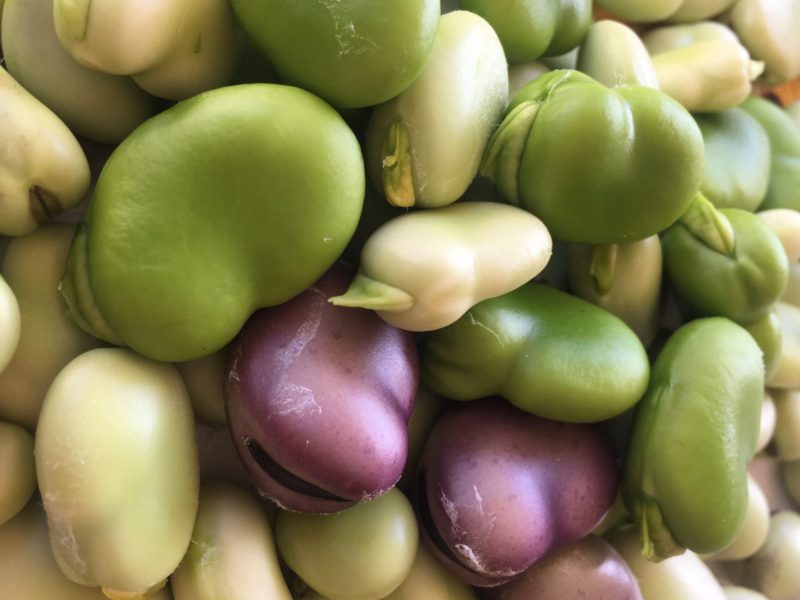It is finally here! That month us gardeners have been eagerly awaiting. Friends let the madness begin! There is so much happening in the garden right now, older squash and melon vines may have some fruit ripening but are showing signs that they are coming to an end. Basils and okra continue to flourish. If your okra plants are older, the pods will be getting woodier, a sign that they are coming to an end. If the plants are still healthy, and not riddled with pests, they can be cut back and composted or used as mulch. The roots can be left in place where they will decompose over the winter or they can be removed, washed, and chopped into smaller bits and used like mallow root in teas. Corn may be ripening, and it is time to start harvesting sweet potatoes. If you grew roselle hibiscus in spring, it will be coming into bloom now. All the plants that have gone into a form of summer dormancy are starting to look lush and happy again, but it is also clean-up time from the summer and time to get the fall garden planted.
The energy of the garden is much gentler right now that the summer heat is mostly behind us. Enjoy this wonderful planting season.
Trees
This is still a good time to get some ornamental trees in and get them established before winter. Potted deciduous should be planted towards the end part of October when it is cooler than the beginning. However, they can also be left to go dormant and planted in winter.
The Veggie Patch
This is the ideal time to direct sow and transplant fall vegetables into the garden. Daytime temperatures are still in the high 90’s as we head into October but that should drop into the 80’s as we head towards Halloween. Young seedlings will still require protection from the sun and hungry birds. For all direct-sown seeds, keep the soils moist. Soils drying out will result in little to no germination. Read our blog Plant a Soup Garden this fall for a fun-themed garden. Get all the information on harvesting food faster this fall with our post on The Quick-Cropping Garden. We also have tips for Planning a Fall Garden and Perennials to add to the Fall Garden.
- Artichokes: Transplant or direct sow. Allow sufficient space.
- Asparagus: Plant 1-year-old crowns.
- Beans: This is also the perfect fava bean planting season.
- Brassicas: It is time to transplant or direct sow members of this large family. This included kale, cauliflower, cabbage, rutabaga, Asian greens, broccoli, and Brussel sprouts.
- Greens: Mustards, cresses, common sorrel, and swiss chard can be planted this month.
- Lettuce: It is still quite warm out for lettuce, plant in the shadier areas or cover with shade cloth to keep cool. Too much heat can make lettuce bitter. Consider planting cut and come again lettuce mixes which can be harvested young before they get bitter. Transplant head lettuce in weeks three and four of October.
Roots
- Carrots: Easy to grow in containers or in-ground. Loosen in-ground planting soils with good, screened compost and washed sand. For best results plant in an area that gets 6 hours of sun.
- Fennel: Transplant or direct sow both bulbing fennel and bronze fennel in October. Bronze fennel is very striking and attracts a variety of beneficial bugs when in bloom. It also gives a generous amount of seed after flowering. It will not form large bulbs like the bulbing type. Florence fennel is a common bulbing type available. Keep fennel well watered for good juicy bulbs.
- Radishes: Tuck radish seeds into empty spaces. They do not need much room and are easy to grow. They are also convenient to plant with carrots, helping to mark out rows and are ready before the carrots need more space to fill out.
- Beets: Beets do best in slightly acidic soil, they will produce best in full sun during winter, however, seeds planted now will require some shading.
- Parsnips: Parsnips can get huge so allow adequate room. They also grow over a very long season, plan accordingly.
- Salsify: Try something new and plant salsify.
- Onions: Try bunching and bulbing varieties. Get short-day types if growing bulbing onions.
- Garlic: Garlic should be planted in the month of October and no later than the first week of November.
- Turnips: Turnips are part of the brassica family, but also fall under the roots. Like other members of the brassica family, they should be well watered, but planted in well-draining soil.
Flowers
This is the ideal month to plant flowers, which will overwinter. They can be transplanted or direct sown. Wildflowers seeds can be broadcast now and will germinate with the winter rains. Other flowers to plant now are asters, borage, calendula, carnations, chamomile, coreopsis, daisies, flax, foxgloves, hollyhocks, nasturtiums, bachelor buttons, petunias, poppies, snapdragons, and more. This is also a good time to plant flower bulbs for daffodils, Muscari, ranunculus, paperwhites, iris, and, anemones.
Herbs
Many culinary herbs and medicinal herbs can be planted out this month. There is still time to plant any mint varieties. Lemon balm will also do well. Fall favorites like sage, thyme, chives, winter savory, dill, cilantro, parsley, and oregano can be tucked among other veggies to work as companion plants. Try some new additions such as lovage, salad burnet, marjoram, and fennel.

